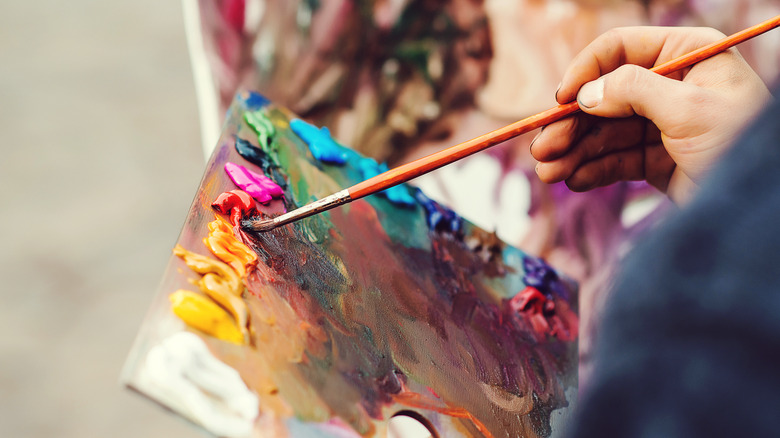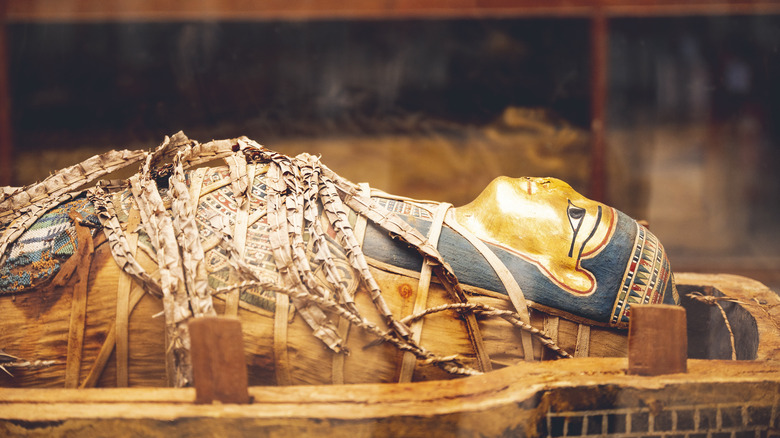The Once Popular Paint Color With Deathly Origins
Mummies became popular in 16th century Europe for a variety of reasons. One of the most popular uses of mummies was for medicine, but the most interesting has to be the role mummies played in medieval paintings. A popular color known as mummy brown was created from a powder made from the flesh of real mummies. Painters of the time quickly began to love mummy brown because of its rich, warm pigment (via The Conservation Center).
Mummy brown was widely used in 16th century paintings and became loved by pre-Raphaelite artist during the mid-18th to 19th centuries. While the number of paintings that have this color in them are unknown, there are records that the paint was bought by artists Eugene Delacroix, Sir Willian Beechey, and Edward Burne-Jones, among others (via FSU Department of Art History). Many most likely purchased and used the paint, but special scientific equipment would have to be used to confirm the its presence in works of art (via the Journal of Art in Society).
Mummies were popular in Medieval Europe for many things
Among the many messed up things that happened in Medieval Europe, the use of mummies may be one of the strangest. In addition to eating mummies and using them as medicine, sixteenth century Europeans also began turning mummies into paint. This paint, known as mummy brown, was made by grinding down human or cat mummies into a powder and mixing it with white pitch and myrrh (via The Conservation Center).
Mummy brown had a somewhat transparent nature that, ironically, made it popular for flesh tones in paintings. It was also used for glazes, shadows, and shading. Mummy brown was not only liked for its color, but also its versatility. Artists were able to use it as both an oil paint and a watercolor. The pigment peaked in popularity in the mid-eighteenth to nineteenth centuries, being used in a number of French and British paintings (via the Journal of Art in Society).
Mummy brown fell out of popularity because it was unreliable
Mummy brown eventually fell out of popularity, but not due to the fact that it was made from mummies. In fact, many artists at the time may not have been aware of its origins. According to his wife, pre-Raphaelite artist Edward Burnes-Jones buried his tube of the paint once he learned that the pigment's name was meant to be taken literally (via Smithsonian Magazine).
Although Edward Burnes-Jones' rejection of the paint may have had some effect on the decreased use of the color, the pigment became less popular mostly due to the difficulty of working with the paint. Mummy brown had a tendency to crack, leaving a less-than-desirable texture. The quality of the paint also varied greatly, making it hard to work with. Surprisingly, however, mummy brown managed to stick around until 1964, when the manufacturer ran out of mummies to use. According to the managing director, "we might have a few odd limbs lying around somewhere, but not enough to make any more paint... [and] we certainly can't get any more."


